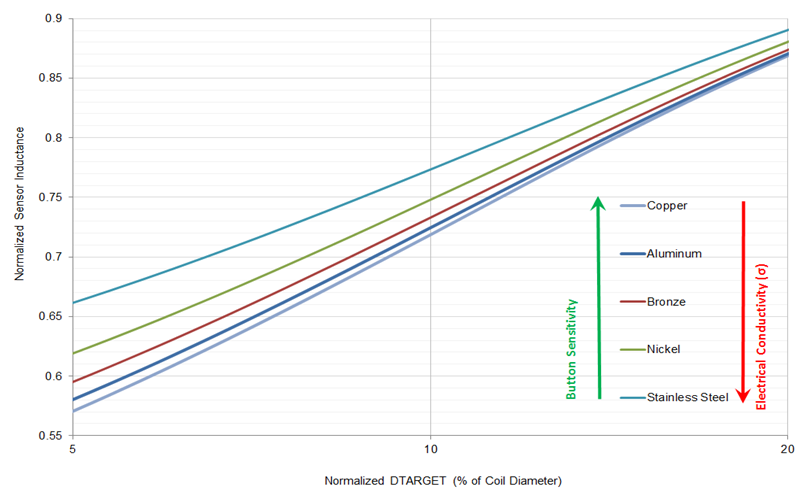SNOA963B February 2020 – July 2021 LDC2112 , LDC2114 , LDC3114 , LDC3114-Q1
1.2 Target Material
A material with higher electrical conductivity (σ) is a better target for inductive sensing technologies. The amount of eddy currents generated on the target surface are directly related to σ of the target material making higher conductivity materials such as copper or aluminum optimum targets for inductive touch buttons. Figure 1-3 shows the normalized inductance response plotted against DTARGET as a percentage of the coil diameter for different target materials. Copper and aluminum exhibit larger shifts in inductance with target movement resulting in a higher measurement resolution.
 Figure 1-3 Button Sensitivity as a function of the Electrical Conductivity of Target
Figure 1-3 Button Sensitivity as a function of the Electrical Conductivity of TargetBecause inductive sensing works on the principle of eddy currents, which are a surface phenomenon, a very thin layer of a conductive material (for example, 0.08 mm of copper) can be added to non-conductive surfaces like plastic or glass to implement an inductive touch interface.